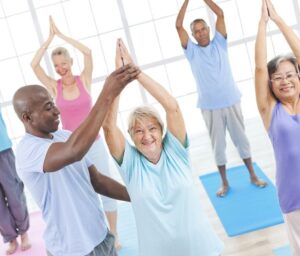 For older adults, a combination of physical instability, dizziness, poor depth perception and osteoporosis can lead to increased risks for falls and other injuries. Balance training, which focuses on fall prevention through strength and stability exercises, has been gaining ground.
For older adults, a combination of physical instability, dizziness, poor depth perception and osteoporosis can lead to increased risks for falls and other injuries. Balance training, which focuses on fall prevention through strength and stability exercises, has been gaining ground.
One study published in the British Medical Journal found that these programs reduced fall injuries for seniors by 37 percent and broken bones by over 60 percent. Learn more about the benefits of balance training.
Fall Injury Risks for Seniors
For older adults, falls can result in fractures requiring a hip replacement, traumatic brain or another head injury and reduced mobility that greatly impacts independence.
A wide spectrum of health issues can also increase fall risks, including:
- Cardiovascular conditions
- Vision and depth perception changes
- Migraines
- Arthritis
- Dizziness caused by medication
How Balance Training Can Help
Also called fall prevention programs, balance training focuses on improving endurance, muscle strength, flexibility and mobility. Improving these areas enhances the body’s resilience when a fall occurs and helps seniors avoid other common hazards.
Strategies involve working with a physical or occupational therapist and continuing progress through a series of at-home exercises. Long-term effects of these programs include:
- Improved reaction time in the event of a fall
- Better coordination to improve your stability
- Better joint and bone protection through stronger, more flexible muscles
- Enhanced cognitive health, which improves your relationship with your surroundings and how you perceive and respond to fall risks
- Improved posture, core strength and stability, which lessen your risks for tripping over an object and improve your recovery following an injury
- Greater confidence to anticipate and manage fall risks
- Lower fracture risks, an injury that can lead to infection or pneumonia post-surgery
- Improved mobility, which includes being able to stand for longer, distribute your weight better and walk greater distances
Where to Find a Balance Training Program
This type of program may be offered at senior centers, short-term rehabilitation programs and physical therapy offices, either as a class or prescribed by a doctor. Although programs vary, common exercises focusing on fall prevention include:
- Balancing on one leg while lifting and bending the other at the knee
- Shifting your weight to one side and lifting your opposite foot off the floor
- Walking heel to toe in a straight line for up to 20 paces
- Extending one leg in front of you while sitting in a chair
- Pushing through your heels from a seated position to stand up
Looking to improve your balance with age? Get the support you need with West Hartford Health & Rehabilitation Center’s therapeutic recreation and medical services. To learn more, contact us today.

